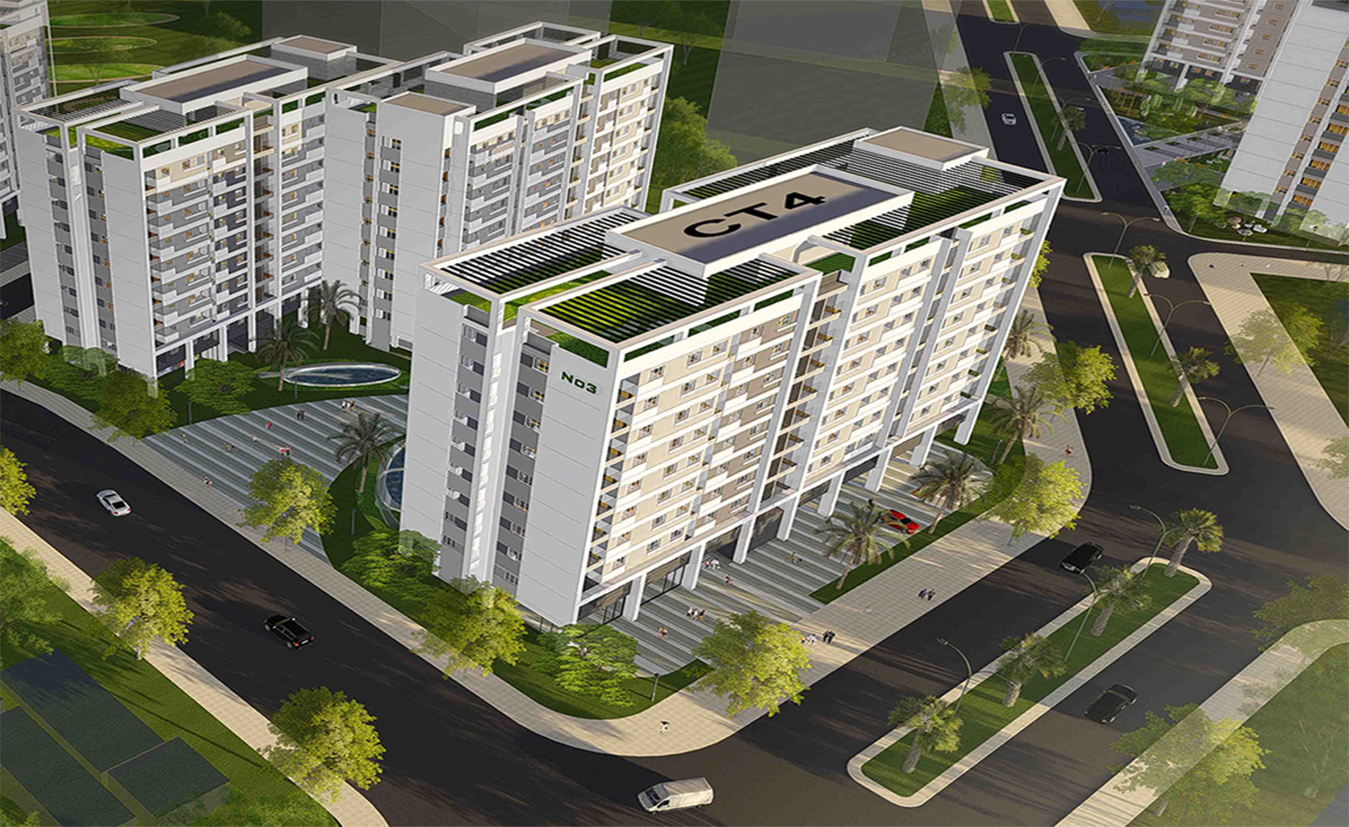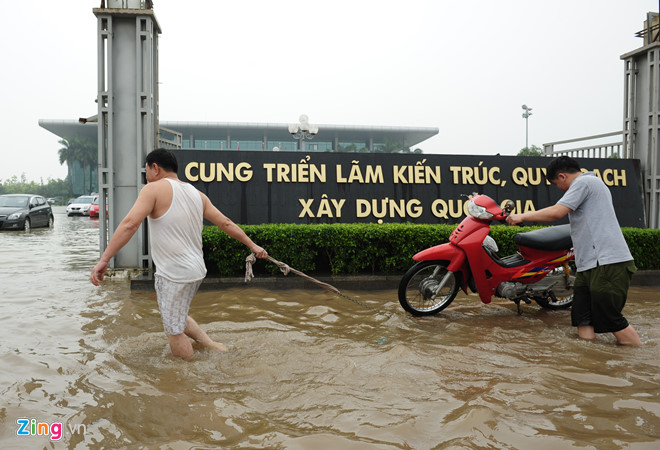Recent debates about the draft Law on Planning seem to revolve around the capability and methodology to integrate urban planning into the overall planning framework. However, the understanding of integration and the approach to building a planning system that fits this characteristic still have gaps. The following discussion addresses 10 issues that may suggest solutions for the current obstacles.
1 - Is designing a strictly hierarchical planning system top-down the optimal solution?
The draft proposal suggests a hierarchical planning system with a strict top-down relationship, requiring absolute compliance from lower levels to higher levels.
However, modern planning systems adopt principles that combine top-down and bottom-up in relationships, respecting both top-down principles (overall benefit) and bottom-up feedback (local differences) in the relationship between levels. This system design reflects the nature of planning as a negotiation, requiring flexibility and relative solutions.
In the context of Vietnam, many top-level plans may have issues regarding reliability in forecasting, timeliness, and the ability to reflect differences between desired models and local realities. Mechanically applying the top-down principle could lead to inadequacies when the system itself is incomplete and lacks synchronization.
Therefore, it is essential to clarify the principles from the top and bottom, meaning the bottom respects and serves global interests rather than strictly adhering to specific top solutions, because large-scale spatial planning—such as regional and national planning—usually only fixes general principles but can be flexible in solutions, especially in multi-industry planning. Avoid interpreting national interest compliance as adherence to a singular solution.
2 - Is the integration of tangible and intangible sectors feasible?
Some managers and experts argue that the Planning Law requires integrating different types of planning and thus, it is not feasible.
However, if integration is understood as simultaneously and comprehensively considering various types of planning within the same territorial space, thoroughly addressing inter-industry and inter-level relationships towards common development goals, minimizing conflicts and overlaps, saving resources, and promoting mutually beneficial cooperation, then the integration between physical planning (urban planning) and intangible planning (socio-economic planning) remains feasible.
Integration is a task requiring multiple fields of expertise, therefore necessitating a Council with an appropriate mechanism. This mechanism must enable parties with significant differences in expertise to collaborate, discuss, and decide. The basis for narrowing differences includes good experts, sound reasoning on forecasting/method selection, and especially suitable database foundations to allow parties to persuade each other. This is a technical and institutional challenge for successfully implementing the Planning Law.
3 - Can integration for types of planning and long-term forecasts spanning decades be achieved?
Some experts claim it is impossible to 'draw' a comprehensive national plan with long-term forecasts spanning decades, and only the Communist Party Congress can accomplish this.
Indeed, projecting far into the future and on such a large scale is very difficult, and modern planning no longer 'draws' like that but approaches long-term forecasting by developing response scenarios for changing conditions. The way to make planning feasible when the future is uncertain is to use medium-short-term planning while aligning with and preparing for medium-long-term strategies.
The 21st century marks significant economic integration changes, competition adaptability, the fourth scientific and technological revolution, climate change, and social changes making forecasts increasingly unreliable as the future becomes more uncertain. Generally, long-term plans are less used, and drafts are reduced to only ten years, with a vision of 20-30 years, aligning with global trends.
However, shorter-term planning does not mean we do not prepare for long-term strategies in certain infrastructure sectors that need early investments or special tasks. By constructing scenarios and jointly drafting long-term strategies with adaptable mechanisms, managers will prepare multiple options to shift strategies when short-term plans become outdated or lose efficacy. This ensures the use of medium-term planning while still aligning with long-term strategic directions. There is no comprehensive planning for the future, but there is preparation for developments based on forecasting possibilities.
4 - Is integration a simple and unique formula in planning?
So far, the draft Law has not clearly explained the levels of planning integration. Perhaps saying integration means discussing and coordinating at a central point when starting to plan is sufficient?
According to many international scholars, integration has multiple levels, starting with data sharing and centralized coordination in planning (1). Integration level (2) requires industries to adjust their planning methods to achieve synchronized solutions. Level (3) is integrating throughout the process, from plan development to monitoring and policy adjustment, also known as integrating planning and implementation. The highest level (4) is integrating sector and level objectives with each other, synchronizing planning coordination with strategies, policies, solutions, and action programs throughout development management across related sectors and levels.
The integration requirements seem to focus on level (1), yet this is a significant advancement over the current fragmented sector-based planning. To improve the sector planning quality and integrate effectively, level (2) integration is needed. Development practices in regions like Hanoi and Ho Chi Minh City and some fast-changing specific sectors like transportation, energy, and telecommunications need level (3) integration.
Higher-level integration must come with appropriate institutional rearrangements. Without a suitable decision-making mechanism, regional planning decisions are challenging to implement, and regional planning becomes a ‘sum of differences.’ A strong, representative, and flexible regional council structure is necessary to execute supervisory authority and appropriate decision-making mechanisms to tackle issues like excess seaports in the southern area or oversaturated industrial zones around Hanoi.
5 - Does integration required by the Planning Law resolve issues like Linh Dam or Giang Vo in Hanoi?
Citing the necessity of the Planning Law to address many inadequacies like allowing excessive construction at Linh Dam or Giang Vo (Hanoi) seems unrelated.
In reality, the proposed changes in the draft Law do not alter the calculations for allocating building density or population regulated in urban planning. The inadequacies in allowing adjustments of local criteria that lead to high-rise residential areas with excessive land use coefficients are the responsibility of local management agencies controlling development. The issue might be related to the current lack of traffic impact assessment tools to ‘block’ such projects and the lack of integrated management systems for both traffic and urban planning.
Many current urban (construction) planning inadequacies relate to the basis of forecasting, forecasting methods, and the influence of other factors (lack of capacity, achievements, term thinking) leading to overly ambitious planning and far-fetched forecasting on unrealistic or unreliable database assumptions. Ambitious planning leads to difficulty in allocating resources adequately, making widespread and ineffective investment inevitable. The issue lies in the quality and method of urban planning, such as lacking integration with infrastructure sectors, resource allocation planning, and management processes.
6 - Is integrated planning only about integrating overall and sector planning?
If integration is emphasized as just changing how sectors combine in overall planning, then it seems to overlook the integration changes needed within each sector before combining into overall planning.
For effective integration, sectors’ individual aspects must be integrated before targeting the overall. For example, transportation planning must integrate road, rail, waterway, public transportation, and personal transportation planning. The water sector must integrate water resource management, wastewater management, integrating water management among agriculture, hydropower, and other water users must be fully considered.
Particularly, the integration between urban planning and transportation planning is increasingly important as substantial investments in metro systems necessitate revising land use planning to ensure operational efficiency. The mutual dependence of public transportation and urban development leads to deeply integrated and broad planning and development management processes.
Effective urban planning requires changes in planning methods, forecasting space use based on resource implementation, forecasting needs using market-related indices, integrating sectors to evaluate multidimensional efficiency. Principally, planning must not only integrate technical infrastructure systems but also follow the general trend of integrated management. Planning becomes a process of monitoring, evaluating, and adjusting using strategic indices on a participatory basis.
Therefore, clarifying and building roadmaps for integration requirements within sectors and planning types, parallel with integration into overall planning, should be considered. Urban planning, specifically, should be regarded as comprehensive base-level planning, ensuring integrated land use planning and technical infrastructure sectors—especially transportation planning, integrating planning and management, and integrating resource (socio-economic development) planning and urban planning.
7 - Is it reasonable for the overall integrated planning system to only extend to the provincial level in relation to overall and sector planning?
The Planning Law considers the provincial level as the lowest in a system with the national level as the 'head', inter-provincial regions as the 'body', and the provinces as the 'legs'.
However, in essence, the province remains an intermediate level, with dynamic regional planning, not directly connecting to the local people and government. Meanwhile, other nations build planning systems on the urban planning foundation, executed by urban grassroots governments rather than regional plans, which often have loose implementation mechanisms. Urban governments are responsible for integrating and executing the legally binding constraints of urban planning and directly to the people. Thus, urban planning always has higher practicality when building resource allocation solutions at regional and national levels.
Historically, urban planning has existed for thousands of years to address human settlement needs, linking nature with society, harmoniously solving interdependencies among various technical, economic, and social sectors through the physical spatial environment. The highly binding implementation of urban planning always forms a solid foundation to position and establish the spatial territorial organization framework at higher levels.
Meanwhile, regional, national, and new rural planning have only recently developed to connect sprawling urban areas within their territories, as interconnected infrastructure (railways, electricity, telecommunications) needs to be organized at the national spatial level during industrialization, and improving civilized living conditions in rural areas is also enhanced.
In our country, even though only about 35% of the population lives in urban areas, over 70% of GDP is produced here. Cities also consume over 70% of the energy and goods demand, and the urbanization trend increasingly makes cities play a larger role in the national spatial organization system.
Should the Planning Law identify the role and position of urban planning within the planning system to align with international methods by anchoring the system to urban and grassroots planning, instead of merely provincial or centrally governed cities? If the planning system roots are established down to the grassroots level urban administrations and promoting autonomous urban governance for type 1 (and potentially type 2 in the future) cities, we can expect type 1 and 2 cities under provincial management to be as dynamic as Da Nang when given authority.
8 - What are the benefits if urban and overall planning only integrates from the regional level upwards?
Some experts suggest that urban planning integration into overall planning should only start from the regional (inter-provincial) level upwards. This aims to minimize conflicts between the Ministry of Construction and the Ministry of Planning and Investment regarding the integration of planning projects.
Restricting urban planning integration into the overall at the regional level helps urban, rural, or specific area planning to continue running in relatively independent systems. Regional (inter-provincial) planning, if focused on regional and national infrastructure connectivity and resource management, will less impact numerous local planning projects.
In other words, pushing urban planning integration to the regional level helps reduce conflicts and time, exposing all malfunctions of the new system. Meanwhile, local area planning continues relatively independently before subsequent consideration.
However, if identifying that the main hurdle is the lack of integration between resource and urban planning is crucial, sooner or later, integrating urban with resource planning both at the regional and urban levels must be addressed.
9 - Should the principle of integration between planning and management be upheld?
Planning is just an intermediary goal, while effective development management is the ultimate goal. The global trend integrates the planning process to the extent that planning entities approach strategically, using strategic indices for monitoring and adaptable adjustments instead of drawing, shelving, and reviewing every 5-10 years as currently.
The draft Law also addresses this as a fundamental requirement for effective integrated management. However, it’s crucial that management data is compatible and can be updated, at least annually, for evaluations. Some sectors might need real-time updates (telecommunications, energy, security, and transportation) to effectively monitor and manage decisions.
Having a compatible and updated data foundation accelerates the multi-sector integration process. Especially in planning for integrated management between policy implementations, strategies, and action programs, aiming for coordinated actions and shared goals among sectors and levels, not just planning documents.
10 - Is a three-year period too short for integrating into the overall planning?
A significant challenge in building the system is transitioning planning to the new system within a short timeframe. Many experts worry that integration will lead to procedural complications and power conflicts, leading to suspended efficacy for many currently stable plans.
This challenge necessitates that the coordinating agency closely collaborates with stakeholders to prepare for the transition. It’s not just regulations but includes specific plans to resolve conflicts so that new and old content, alternative, and contingency plans are thoroughly anticipated before changes.
Much can be accomplished in three years with determination, but being rigid with a fixed timeframe across all levels and sectors is inadvisable. For instance, the construction sector currently uses CAD technology maps, not compatible with planning management using GIS technology. Standardizing data formats takes time, but some localities with digitized data and converted land database systems can do it quickly. Generally speaking, progress where possible without rigidly adhering to a three-year timeframe for all levels is more practical.
Although predicting outcomes is challenging, the integration trend is undoubtedly appropriate to encourage stakeholders to self-improve and serve mutual interests. Integrating based on the geographic information system of the resource sector for unified management is a global trend and technically feasible. However, institutional arrangements for stakeholders to provide integrable information are prerequisites for planning and supporting management implementation.
Dr. Nguyen Ngoc Hieu - Vietnam-Germany UniversitySource: Vietnam Urban Planning Development Association
 Article table of contents
Article table of contents





.Medium.png)
.Medium.png)
.Medium.png)
.Medium.png)
